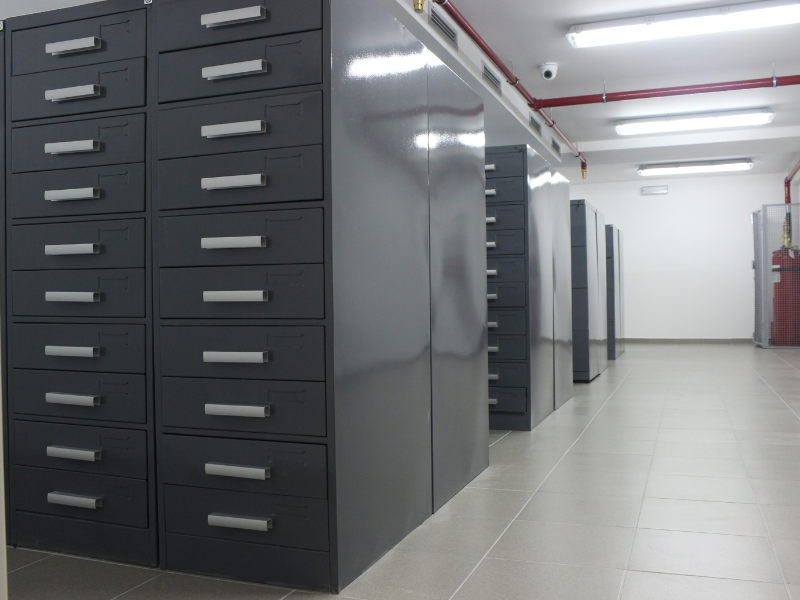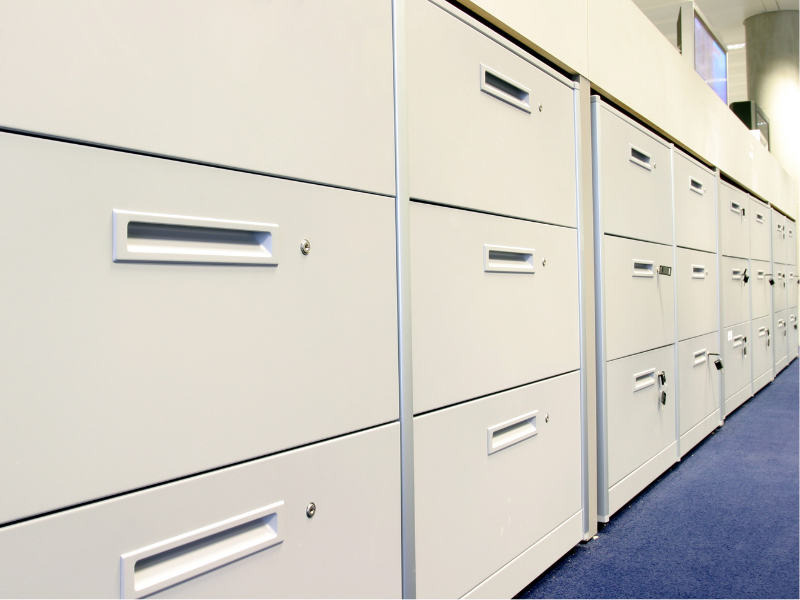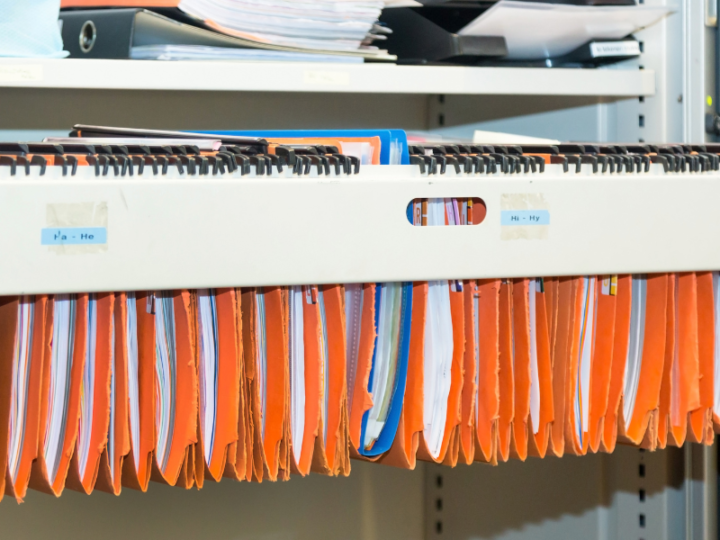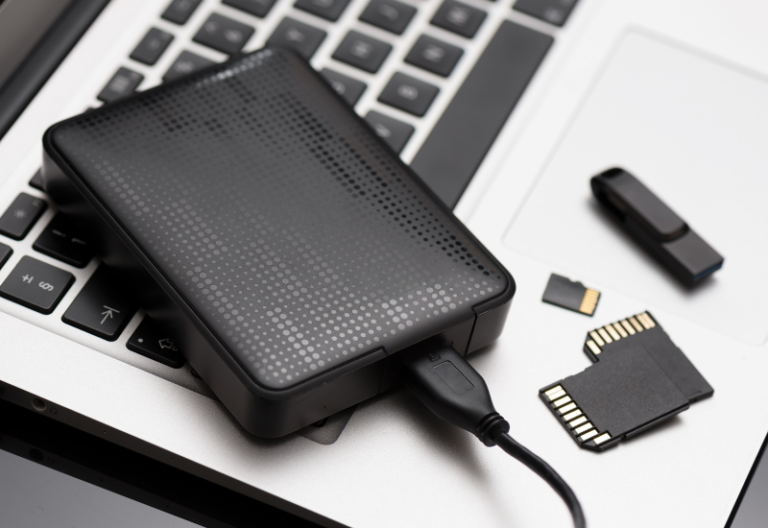Ensuring secure record storage is a must, especially when data breaches and cyber theft remain rampant. In 2023, 353 million individuals in the US were affected by data breaches, leakages, and exposure. Industries like healthcare, financial services, and manufacturing saw the most number of data compromise cases.
Here is a quick guide to help you protect sensitive data and maintain secure records storage practices.
Table of Contents

Records Storage and Security Overview
Documents are part of doing business and keeping them secure is a constant challenge. Malicious individuals will stop at nothing to access private data that they can use to launch bigger attacks. Using a secure record storage facility and implementing a safe management plan are strategies to protect business documents from unauthorized entities.
If you must store paper documents, know that they take up space and require additional staff. Working with a records facility will save costs while providing a secure storage area.
Meanwhile, if you’re keeping electronic records, working with the wrong provider can expose your records to security risks. Choosing a reliable cloud storage solution will ensure you have access to the latest encryption methods, keeping your records secure.
Best Practices for Secure Records Storage Management
The following best practices will help you keep records secure:
Create a records management policy
These are procedures for creating, storing, accessing, retaining, and disposing of all company records. As part of the policy, encrypt sensitive information with secure record storage tools and use access control to ensure only authorized personnel can access them.
You should communicate the policy to all employees and conduct regular audits to ensure compliance.
Classify records and create an inventory
Doing so can help determine which ones need the highest security measures. Records should be classified based on their sensitivity and importance. You should also maintain a complete list of all existing documents and earmark irrelevant ones for deletion.
Misfiled or misplaced documents cost money and could potentially fall into the wrong hands. Make sure to label all records, including those kept physically in filing cabinets and drawers and those stored electronically in secure record storage services.
Establish retention schedules for different types of records based on legal requirements and business needs. Dispose of irrelevant records securely using methods such as shredding for physical records and secure deletion for electronic ones.
Use secure record storage solutions
Store physical records in locked cabinets or rooms with restricted access. Use locks to deter prying eyes and physical security devices like fire and security alarms to minimize the risks of theft or fire.
Use secure servers or cloud storage solutions with built-in security features for electronic records. These record storage solutions should use the latest encryption technology and have physical servers located in secure locations.
Have a redundant backup plan
Prepare for the unknown by implementing regular backup procedures to ensure data availability in case of accidental deletion, hardware failure, or other disasters.
Store these backups in secure locations and test the recovery process regularly. Train employees on disaster recovery and business continuity plans so they know what to do in case of disasters.
Continuously improving methods for secure records handling
Technology, regulations, and business needs constantly change, so you should adapt your practices and systems accordingly. Monitor the performance of your record management plan and refine any shortcomings, inefficiencies, and security vulnerabilities.
Learn from security incidents and implement improvements to prevent future occurrences. Adjust the program as needed to correct any glaring issues.

Key Features of a Secure Record Storage Facility
A record storage facility should protect your documents from theft, damage, and unauthorized access. To become secure, it must demonstrate its capability to provide the following:
- Physical security measures: The facility must have sufficient perimeter security like fences and intrusion detection systems like alarms to restrict entry only to authorized personnel. The area must have adequate lighting to deter intruders and there must be cameras to monitor the facility’s interior and exterior areas. Trained security personnel must patrol the premises 24/7 and be able to respond promptly to security threats.
- Restricted access controls: Authorized personnel must use key cards, biometric scans, or PIN codes to access the area, while visitors must be escorted while on the premises. There must also be logs of all entries to the facility.
- Fire suppression and prevention: The facility must be constructed from fire-resistant materials and have sufficient smoke detectors and fire alarms to detect outbreaks immediately. It must have automatic fire suppression systems like sprinklers or gas suppression to extinguish fires quickly.
- Sturdy storage infrastructure: Racking systems must be sturdy and organized, and all documents must be stored in lockable cabinets and containers. Records must be kept off the floor (in pallets or shelves) to protect against moisture and damage.
- Regulatory compliance: The facility must adhere to relevant regulations like data privacy acts, record retention schedules, and disposal procedures. It must also have a disaster recovery plan and offsite backup to ensure data remains available even in unavoidable disasters.
Safely Store Records in the Cloud
Besides ensuring data accessibility, storing records in the cloud offers enhanced information security. As long as proper encryption, regular backups, and access controls are in place, you can store records without worrying about breaches, theft, loss, or damage.
Following the best practices mentioned above can help you store records in the cloud while complying with industry standards and relevant regulatory requirements. More importantly, you must choose a reputable storage service with clear backup retention and data recovery policies.








